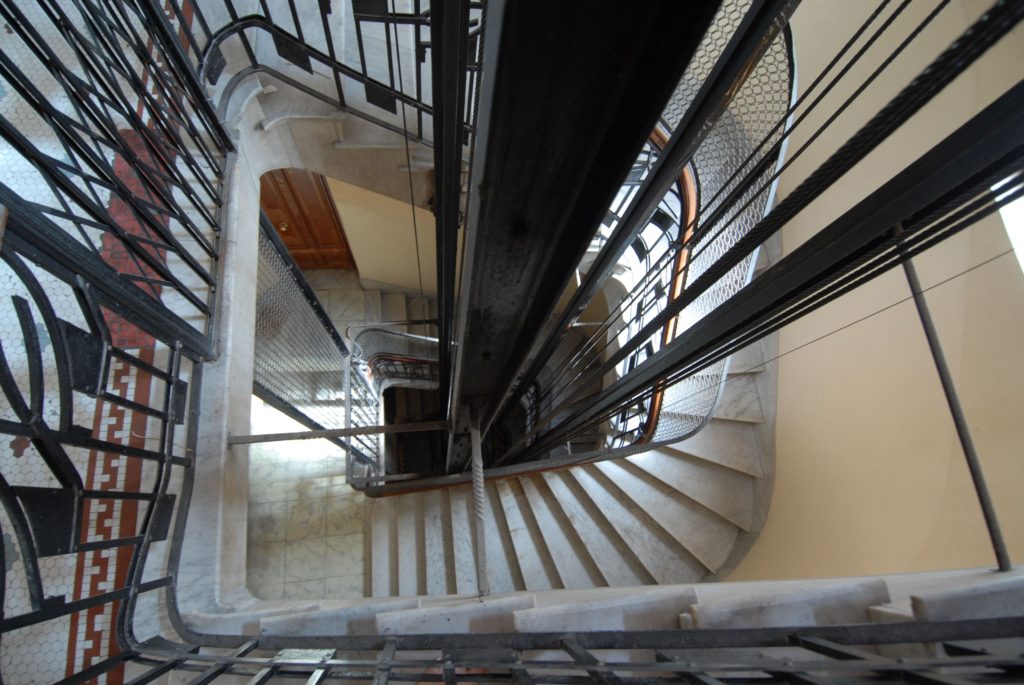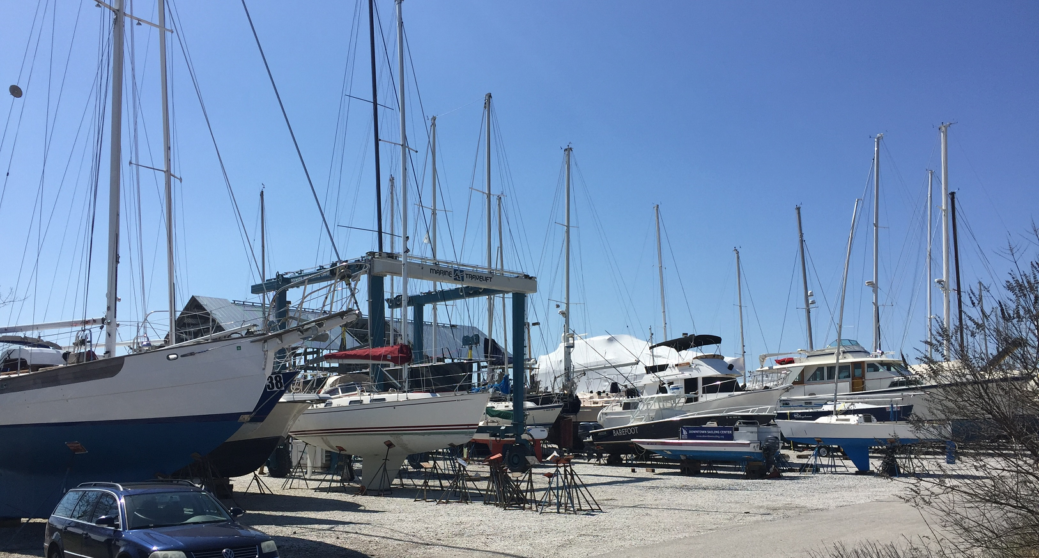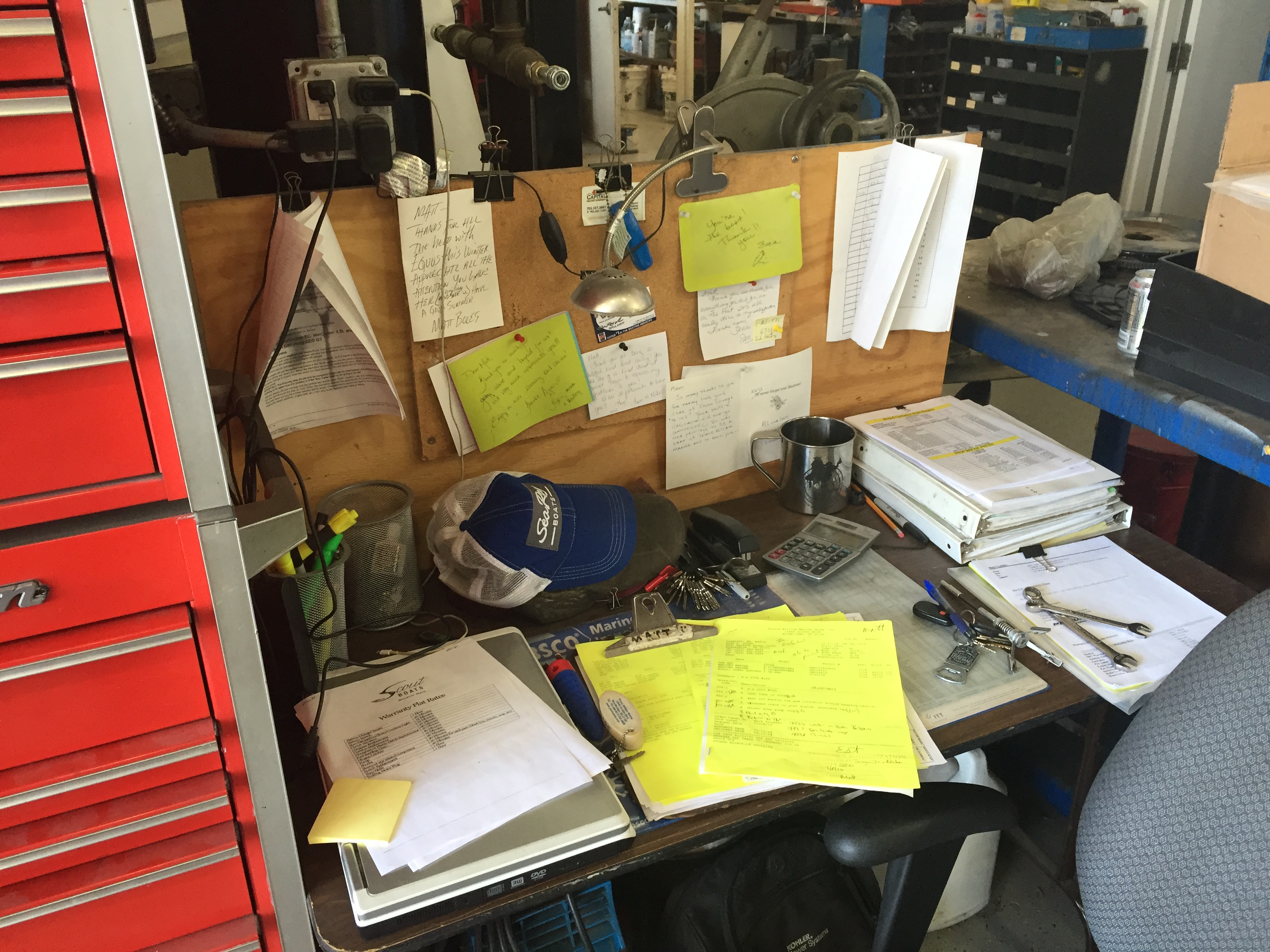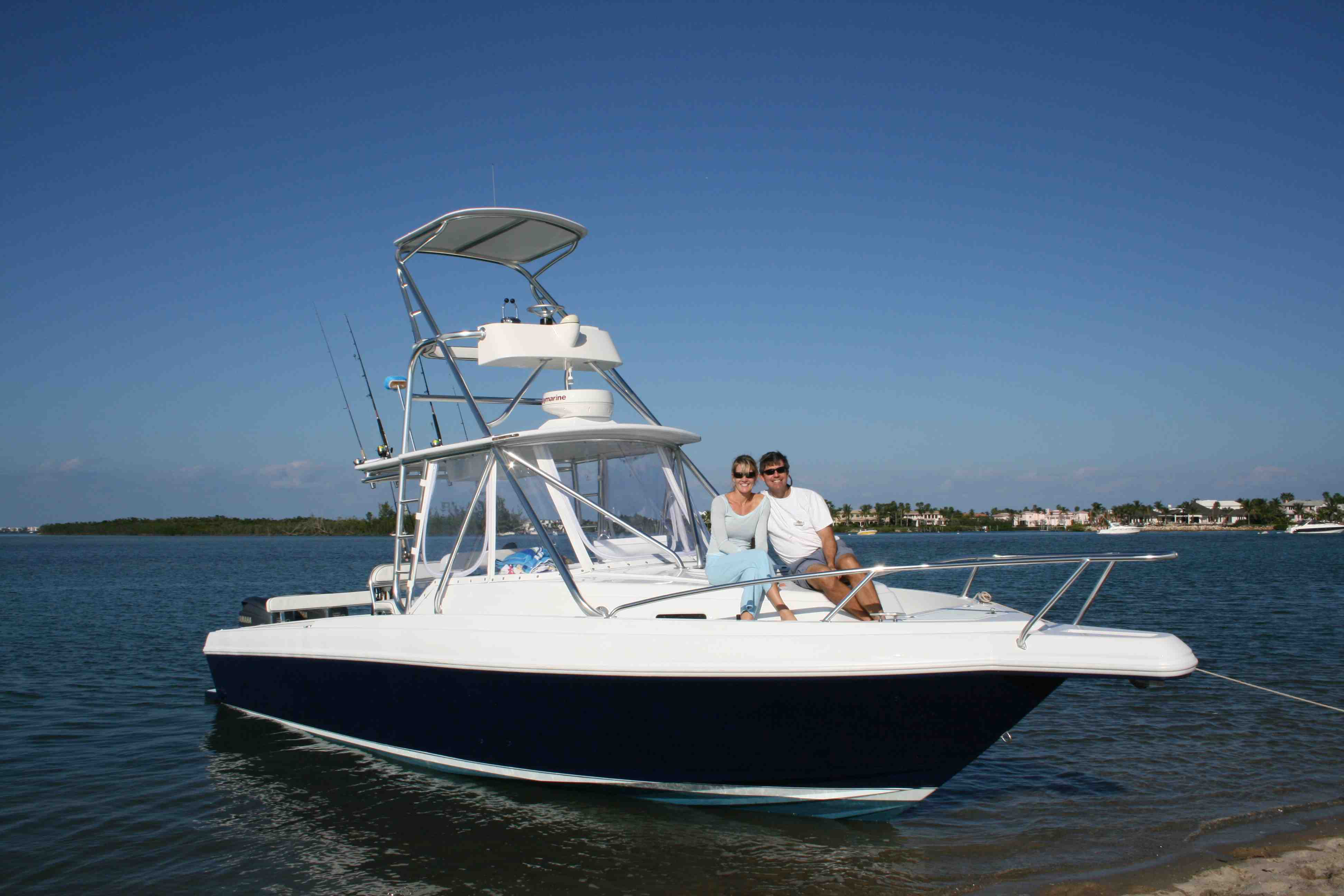
I was inspired by an article published at the beginning of 2017 by Eve Samples, Opinion and Audience Engagement Editor at the Stuart News. As a columnist, she felt it was important to let her readers know her backstory, at least some of it and to talk about what she thinks and believes. She was inspired by a fellow journalist at the Orlando Sentinel, so I thought why not spread the virus and use this format as a way to relaunch my blog.
I stopped blogging regularly in 2013. At one point I was publishing an article per week. What I came to realize is I miss having a platform to express myself and to connect with others. I believe that creating art and connecting with people are two of the most empowering things humans can do. Maybe it’s not for everyone but it resonates with me and when I stopped writing, stopped connecting, it was like a part of me ceased to exist.
People ask me whether it makes sense to start a blog. With all of the content on the web, how can you possibly be heard? My answer is it doesn’t matter who hears you or who reads it. I believe that the art of writing can unleash creative power within. Seth Godin likens it to Learning to See. We learn by observing the world and interacting with interesting people. The art comes from condensing these learnings into words in an empowering way. Writing is a dance between the writer who leads and the reader who follows. When you first learn to dance you likely won’t be very good at it. So you dance alone, maybe in front of a mirror if you can stand it, to learn how to move and feel the music. Write, publish, repeat…do this with consistency and good things could happen.
In 2007, I started a blog with no readers. My readership grew to over 1,500 by 2011. After I sold my business in Oct of 2013 my writing fell off as I started to concentrate on my role with the new company. After 3+ years, I came to realize that I miss the creative pursuit of writing and connecting with people online at a deeper level than what Facebook and Twitter have to offer.
My Backstory
People are often surprised to learn that I live in the town where I was born. This especially surprises my friends in the start-up and “lifestyle design” community who often leave the nest to live overseas on the cheap to work on their business with only the bare essentials (backpack, laptop, smartphone). I’ve been fortunate to travel to many parts of the world but for me and my family, living in the U.S. and most specifically Stuart, FL checks a lot of boxes for us.
I grew up in West Palm Beach, FL, got an Electrical Engineering degree at the University of Florida and landed my first job at Motorola as a Software Engineer. I hated my first job. Not Motorola specifically, but I hated the commute, hated the cubicles and especially hated the monotony of the 9 to 5.
But I was intrigued by the sales people who would visit Motorola to sell test equipment or the latest software development tools. I was curious about these nomads. They got to travel from place to place and play with technology. I wanted in. So I befriended a rep at a company called IDE based in San Francisco and the next thing I knew I was flying out to Silicon Valley for product training. I spent 5-years there as an Applications Engineer (e.g. “demo dolly”) before becoming a full fledged sales rep and having a territory of my own.
I eventually became the Southeast Regional Sales Manager at Atria Software in Natick, MA. It was at Atria that I got a taste of what it’s like to “IPO”. My stock options actually had some value. After Atria had gone through a couple of acquisitions (most notably from a company that was started by Reed Hastings the founder of Netflix), I decided to start my own company with a co-worker at Atria and an associate of mine at Motorola. In 1997, we landed our first bit of venture funding and we were off to the races. In 1999, we sold that company to a start-up in Sunnyvale, CA called Interwoven. Interwoven went pubic in the midst of the “Dot Com bubble” and once again I witnessed the magic of stock options. However this time I lived through both the euphoric highs and the eventual crash. Amazing how wealth can be fleeting if you aren’t mentally prepared for it.
My wife Nancy and I had our first child about this time. I traveled constantly while at Interwoven and I began to feel that I was missing out on some very important experiences in my son’s life. So we made the decision to look for something close to home. At the end of 2002, I bought a small software company with another investor and started working their full time in 2003. The company developed a management system for the marine industry.
We thought we had found the perfect company…it is based right here in south Florida (no more commuting to Silicon Valley or Boston), it’s software (I am “tech guy”) and it’s in the boating industry. Growing up in South Florida, I love the water, boating, fishing and diving. But what we learned was selling technology in an industry that is completely dependent upon discretionary spending is a tricky tightrope to walk. The boom times are good but the busts can be crippling.
In 2009 we almost went out of business. Everyone at the company took significant pay cuts to keep the doors open. Most of our customers stuck with us too and for both them and our team, I am forever grateful. We emerged out of this dark period much leaner and with a stronger balance sheet. In October of 2013 I sold my business to what was then called My-Villages (now known as MyTaskit). I am still involved in MyTaskit today.
People ask me why I am still involved with the company that I sold. Why haven’t I started something new? You’ve been doing this for 13 years, aren’t you tired of it? My honest answer is I prefer the long game as opposed to trying to manufacturer quick hits. The grass always looks greener elsewhere and I have a lot left to do at MyTaskit. We are not only expanding in the marine industry but looking at other industries that would benefit from the technology we are building. In a nut shell, I still have things I can contribute that adds value and I want to see us reach our goals.
This leads me back to my blog and why I am re-starting it. Outside of MyTaskit, there are other projects that I want to start, people I want to connect with and places that I want to visit. The discipline of writing a blog will help me learn to see and better understand and connect with the world.
For the 2 or 3 people that are still with me, I would like to share some of the principles that I believe. These are the things that I practice and the habits I want to form. These are things I wish I would have known when I got my start in the business world. So maybe this will help someone who has yet to launch their first business or shoot for a big promotion.
I believe connections, relationships and the ability to have a positive impact on someone’s life is our greatest value
We are social beings. When our energy is focused on positively impacting others lives, the value it brings to ourselves is as great or greater than what is received. It can be as simple as smiling more often, being less critical or lending a hand to someone in need. One of my goals in 2017 is to get out of my preprogrammed responses to things I find objectionable. We go through life with these preconceived notions of how the world should be. If a person or event disrupts our concept of what is right, our positive energy shuts off and we close ourselves to growth. I am working to remain open at all times and to never close my heart or mind to any external stimulus.
When confronted with a stressful situation or someone says something that might offend you, remain open and relaxed. Don’t tense up and close. I tend to get frustrated when little things don’t go my way like spilling some milk in the kitchen. How you react to that situation determines whether you decide to that emotion around with you for the rest of the day or simply let it go. As long as you are defining what you like and don’t like, your mind will open and close. When you close up, you could miss a very important opportunity, a chance to learn something new or the ability to develop a new relationship.
I believe you are not your thoughts
This goes against the age old saying “You are what you think”. Actually the saying is correct if we let our thoughts control us. But how do we change? How do we quiet the seemingly endless and random thoughts that pop into our mind? A powerful concept taught by Michael Singer in The Untethered Soul is your thoughts and emotions aren’t really “you”. You are the observer of your thoughts and emotions. The true “you” is your consciousness or the Self. Your thoughts and emotions are simply the object of your consciousness. Said another way, “you” are not what you think.
Most of the time, our thoughts and emotions seem somewhat random. Different view points and opinions will pop into our mind constantly, often taking varying positions. If you step back and listen to your thoughts, you may find that they can be a bit melodramatic. One day you think “She loves me”, but when she doesn’t call you that night you start thinking “Maybe she really doesn’t love me”. Your thoughts can be all over the place. Where does this come from and more importantly why do we put so much value in them?
Being the observer of our thoughts and emotions is similar to watching a movie. According to Singer, we can get caught up in our thoughts in the same we can be completely captivated by a good movie. We forgot about the passing of time or where we are.
For me, there are a couple of things in 2017 that I am practicing to help quiet my mind and take back control. I have started the practice of a morning ritual to help me get centered after I wake up. It consists of meditation, prayer, and then journaling. I typically meditate 5-10 minutes before I have my morning coffee. In my daily journal, I like to write down what I am grateful for and what I want to accomplish that day. If you wake up feeling stressed, off center or unenthusiastic, try getting yourself into a morning ritual that works for you. It could help you kick start 2017 and the rest of your life.
The other thing I am working on is to not label my random thoughts and emotions with words like “what a stupid idea” or “why can’t I concentrate for more than five minutes?” Instead, when a thought or emotion pops in my mind seemingly out of nowhere, I just label it “thinking” or “thought” and move on. Don’t attach emotional baggage to these seemingly random thoughts, simply let them go. When a negative thought or emotion arrives I try to take a few deep breaths, relax my shoulders and release them.
I believe that anyone can take control of their life and work from anywhere by maximizing the use of technology, global resources and a systematic goal setting process
We can design a life that meets our objectives. While our thoughts may say “I am not smart enough” or “I am stuck in this job or career” remember that these are just random thought streams scrolling across our mind. With a laptop and internet connection, people can build businesses or perform tasks that were almost inconceivable 20-years ago. This freedom to produce and publish our work, along with the ability to communicate and collaborate with virtually anyone on the planet, has given entrepreneurs, artists and technology workers a huge amount of freedom and leverage.
Where I have gotten stuck time and time again, and I sense I am not alone, is on the goal setting part. What do I want to do? How do I want to do it? Why do I want it in the first place? In the book, Start with Why, author Simon Sinek says that your why is the purpose, cause or belief that drives you to do what you do. Your why will strengthen what you do and how you plan to do it. I put in writing my long term vision in these areas: Business/Career, Financial, Health, Personal Development, Spiritual, etc. My 15-year business/career goal looks something like this:
What: I want to help people maximize their potential and grow their businesses through the use of technology and simplified business processes.
Why: I believe I can make the world a better place if I can help people feel energized, fulfilled and intellectually stimulated at work.
Taylor Pearson, the author of The End of Jobs teaches a goal setting method that starts with your long term vision and then works backwards from there. Formulate a vision statement that best characterizes what you want do to or who you want to be in 15 to 25 years in each area of your life (Business, Health, Spiritual, etc). You then start to outline 90-day, weekly and daily goals with milestones and actions to meet those objectives. Using this long term approach bolstered by short term actionable milestones, I believe you can do nearly anything.
To get started, choose to do one thing each day that moves you towards your goal. According Benjamin Hardy, research has found that when people commit to something, their desire to be seen as “consistent” drives them to act according to the commitment they’ve made. Eventually, if your behavior matches your commitment for a long enough period of time (this study argues it takes around 4 months), your attitudes will also change. My commitment is to publish a blog post once per week. As I mentioned earlier, when I consistently did this from 2010-2012, I built an email list of over 1,500 subscribers.
Now that you’ve committed to doing one thing that moves you forward, you now have to “know thy enemy”.
I believe that the biggest enemy to producing anything of value is the Resistance
Avoiding the Resistance or pretending it’s not there is the way people get stuck and stop producing their best work. I fall into this trap consistently, so I have to remind myself that the Resistance is always there and it’s not my friend. For me the Resistance is email or compulsively creating To Do lists and then checking off items on that list that keep me busy but don’t really accomplish my long term goals. I have found that you have to face the hard stuff, things like sitting in front of a blank screen knowing that I have to produce 3,000 words by noon, making a sales call to the prospect that I know could be the largest deal of the year or choosing to take an online SEO course as opposed to watching Monday Night Football.
I believe that “stuff” is stressful
The more things you collect, the more you have to worry about your stuff. In 2010, I had all the markings of a success…big house on the water, a 34 foot boat, a condo in Costa Rica, etc. The dirty little secret is I also amassed sizable debt to collect all my stuff. While I looked successful on the outside, I was letting debt and the stress of keeping up with my stuff consume me. Filling my mind with more to do lists so I can care for my stuff robbed me of creative cycles.
Stuff is actually another form of the Resistance. Said another way, if your brain is worried about taking care of your stuff you don’t have the freedom to nurture new relationships, cultivate new ideas, do good work, travel and spend time friends and family. While I miss waking up in the morning and seeing the St. Lucie River from my bedroom, what I don’t miss are big mortgage payments, large tax bills and the carrying cost that all the stuff brings along with it.
I believe the biggest threat facing the United States is our national debt and our bloated government bureaucracy
On Dec 31st, 2016, the U.S. national debt was just shy of 20 trillion dollars, surpassing our GDP by over a trillion dollars. The U.S. government spends most of the taxes it collects just to pay the interest on this debt and cover Social Security and Medicare. The U.S. is starting to look and act a lot like the Roman Empire as it evolved into a bloated bureaucracy and later faded out of existence. France suffered a similar fate 1715 when it’s trade deficit hit an all time high. Similarly the once powerful Ottoman Empire became swallowed up in debt and was eventually dissolved in 1922.
What’s worse is not only is our government nearly broke but many major banks in the U.S. are insolvent as well. If every borrower in the U.S. decided to withdraw the money they have in say Bank of America, the bank would have to shutdown or the government would need to step in and impose withdraw limits. Look at any financial statement of any major bank. They typically have 10% available cash on hand compared to deposits.
Could we see daily withdraw limits in the U.S? In June of 2015, Greek authorities imposed a withdraw limit of 420 Euros per week to avoid a run on the banks. This a scary reality as Greece is a democratic EU member. We aren’t talking about Venezuela. Could you imagine trying to withdraw your own money from your local bank and the government decides to limit what you can withdraw?
While my viewpoints are more aligned with the Libertarian Party, I am a registered Republican in Martin County, Florida. This is because Florida has closed primaries, meaning only voters registered as a Democrat or a Republican can vote in a primary. I am an advocate for less government, but instead what we have is a bloated and hemorrhaging political system.
The point many people miss is we can become insulated as Americans forgetting that their are numerous opportunities around the global. There are places outside of the U.S. that are superior in terms of cost of living balanced with quality of life, safe investment opportunities, stable banking systems, governments that run a surplus not a deficit. Don’t get me wrong, I love the U.S. and living in Stuart Florida. My wife and I believe that we are in the right place (for now) to raise our teenagers. But we are trying to not limit our thinking to the United States when it comes to where we decide to “write our next chapter” or invest our retirement dollars.
One thing is for sure, the U.S. is a great place to be a consumer. We are a consumer driven society. You can buy anything you want from your computer, phone or tablet, and it will be shipped to your door step possibly that very same day. Amazon plans to use drones to deliver goods to your home and is test marketing this in the U.K. now. But as an investor and a saver, I feel I am being punished by a system that discourages holding cash reserves and offers little options to value investors. Money markets and CDs earn less than 1% (a negative return if you adjust for inflation), the bond market is projected to decline given rising interest rates and the U.S stock market by most accounts is over valued.
For instance, outside of the top 25 companies in the U.S. stock market, most of the remaining 2,500 or so companies have an average cash to debt ratio of 16%. Overseas there are simply better values. These include foreign stocks in companies that in some cases have more cash on hand than the size of their market cap, solvent banking systems in countries with more fiscally stable governments, money market interest rates above 5% and safe places to buy and hold tangible assets like precious metals.
The only way to fix our problems at home is to become a nation of producers again. We must produce more than we consume and export more goods and services than we import. When we get our financial house in order, I believe that other problems facing this country like our dilapidated infrastructure and dwindling environmental ecosystems will improve.
I believe that positive growth can happen when empathetic listening can transcend our political and racial differences
Debating about Trump vs Hillary can add some color to a dinner party, but as it relates to your overall well being and your family’s health, safety and prosperity…who sits in the White House has little impact. This view point is hotly debated among those close to me who love talking about why this guy or that gal is good or bad for our economy or environment. I am amazed at how the political divide in this country has caused people to unfriend their political foes on Facebook or even divide families.
We have got to start talking and making an attempt to try to see the viewpoint of those that we disagree with. One of my heroes is my father’s second cousin, Governor LeRoy Collins. Not only was he a great leader and visionary, he was also an empathetic listener and was willing to risk political advancement to do what’s right. During the Civil Rights movement he helped find a peaceful resolution in Selma, AL when Martin Luther King, Jr and his followers marched in defiance of the Alabama State Troopers. This act of peace was later used against him by his political adversary in his bid for a U.S. Senate seat.
My hope is that by putting these beliefs in writing, it will hold me accountable and help me live by a set of clear values. If my thinking adjusts over time, I now have a benchmark to gauge my evolution. At the end of the day, what most of us want is a sense of purpose, and to be enthusiastic, happy and peaceful. Those are at least the attributes I seek to achieve and look for our in both friends and colleagues. My hope for this blog is that it will help me see, help me engage with people at a deeper level and hopefully aid others who are seeking to make sense of the world in which we live.









